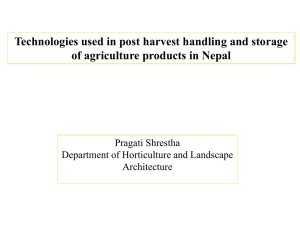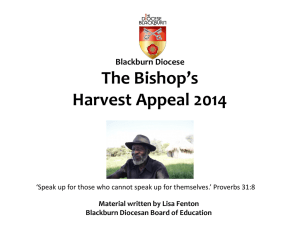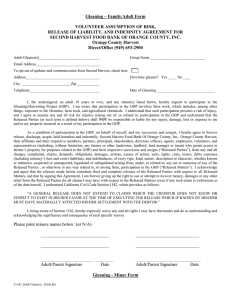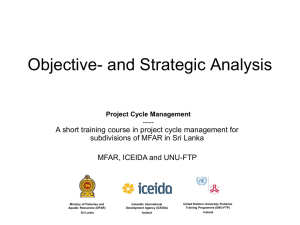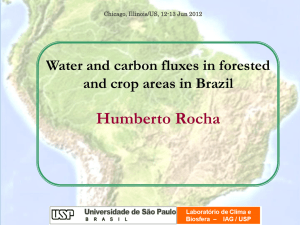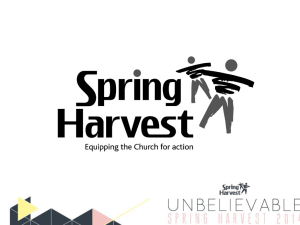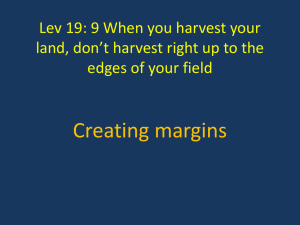GAP for Urban Food Producers
advertisement
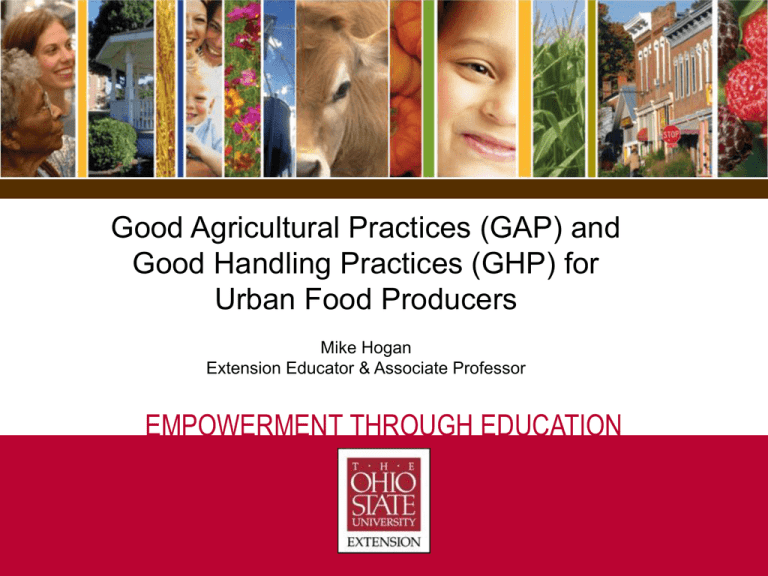
Good Agricultural Practices (GAP) and Good Handling Practices (GHP) for Urban Food Producers Mike Hogan Extension Educator & Associate Professor EMPOWERMENT THROUGH EDUCATION Food Safety • What first comes to mind when you think about…. -Sprouts from Germany -Spinach from California -Beef from Great Britain -Peanut butter, tomatoes, etc.! Foodborne Illness in the US • 76 million cases in US each year • Resulting in 325,000 hospitalizations • And 5,000 deaths Foodborne Illness in the US • Most at-risk: -children < five years old -adults > 65 years old -pregnant -immune-suppressed (HIV, chemotherapy, organ transplants, etc.) Safest Food Supply in the World? • 33% of Canadians get sick yearly from food • 25% of Americans get sick yearly from food • 2% of British get sick yearly from food • 1% of French get sick yearly from food What is GAP and GHP? • GAP = Good Agricultural Practices • GHP = Good Handing Practices • A comprehensive system for reducing foodborne illnesses spread primarily by microbes • It is Quality Assurance Food Safety Goal of GAP and GHP • Minimize fruit and vegetable contamination from before planting through post-harvest: -before planting -during production -at harvest -post harvest GAP and GHP Include: • Recordkeeping/mapping • Site characteristics: -history, drainage, neighboring use • • • • • Soils and soil amendments Field sanitation Water Human health and hygiene Animals (wild and domestic) GAP and GHP Include: • • • • • • Pesticides, fertilizers, other inputs Transportation Storage Marketing Traceability Consumer education Before Planting • • • • • • Previous land use Drainage Floodplain? Design for delivery Availability of water (including potable) Physical hazards: (glass, nails, staples, wood, etc.) During Production • Water: -Know the source -May need to test non-municipal -Consider path of harvested water -Avoid use of natural surface water from ditches, ponds, retention basins, etc. During Production • Water: -Consider what you are watering: --soil --plant --edible plant parts -Hang hose, don’t store on ground -Use only potable water for drinking and hand washing During Production • Soil and soil amendments: -Test, test, test! -Know the source and quality of soils brought into the garden -Best to apply only composted manures -If you apply raw manure, do so in autumn, or 120 days before harvest During Production • Soil and soil amendments: -Store fresh manure and other noncomposted organic materials away from where produce is being grown -Compost in bins, and locate composting area away from where produce is being grown -Mulches, wood-chips During Production • Other crop inputs: -Always follow label directions for all pesticides, fertilizers, and other crop inputs (even organic products too!) -Pay particular attention to preharvest limitations (PHL) During Production • Keep out the critters! -Fence entire site if practical -Keep compost piles covered -May need to control rodent or bird populations in certain situatons -Don’t leave food scraps around -Beware of dog! (and cat) During Production • Human hygiene: -Know where feet have been! -Provide potable water for handwashing -May need toilet facilities for large community garden Harvest • Human health and hygiene are especially critical to food safety during harvest • Educate gardeners and family members about food safety Harvest • Proper hand washing is critical: -Reduces infections by 35% to 50% & reduces GI illnesses by up to 80% -Provide potable water and singleuse towels at garden site -Watch kids like a hawk! Harvest Harvest • Hand sanitizer is excellent, but does not work on hands that are soiled • Watch kids like a hawk! Harvest • Consider disposable gloves for picking • Ask gardeners to refrain from picking when they are ill (call in sick!) • Pick when produce is dry • Do not harvest damaged or diseased produce, or at least split harvest and separate • Consider composting damaged produce Harvest • Use only clean containers for harvest • Don’t use wood or cardboard containers • Cool product down quickly Post-Harvest • Human hygiene again critical • Use only potable water for washing produce • Duration of washing is important • Water should be within 10 degrees of produce temperature Post-Harvest • • • • Don’t store produce wet Store at correct temperature Transport in clean vehicle Don’t transport with raw meats, gasoline, pesticides, or equipment Post-Harvest • Educate consumers, both buyers and others who receive the products which you grow Summary • Quality assurance for produce is important to prevent foodborne illness • Everyone in the production and marketing chain has responsibilites • Human hygiene probably the weakest link in the system For More Information • • • • • • www.extension.osu.edu www.gaps.cornell.edu www.Ucgaps.ucdavis www.Extension.psu.edu/food-safety/farm www.ams.usda.gov/AMSv1.0/ www.opgma.org Thanks to sponsors


